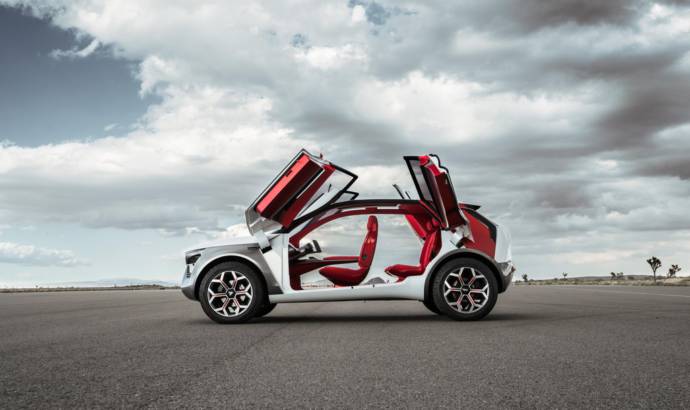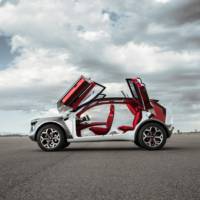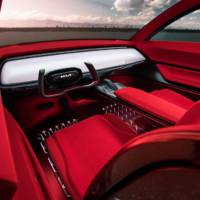Urban mobility is a tough challenge for every manufacturer. Kia has a head start thanks to its electric Soul and Niro models. Now it makes an even bigger step with the introduction of the new HabaNiro concept.
It is a fully-electric, all-wheel drive, four-seat wonder car with an All Electric Range (AER) of more than 300 miles, level-five autonomous mode, butterfly wing doors and more advanced tech than what helped land men on the moon.
The HabaNiro design is defined by the energetic interplay between the protective metallic grey cladding that encompasses the front wheels and extends onto the body sides and the bright “Lava Red” aero panel that defines the C-pillar and extends up and over the roof.
Satin aluminum skid plates, milled billet aluminum tow hooks, anodized Lava Red aluminum accents, and the embossed HabaNiro name complement the upscale look while suggesting the vehicle’s adventure-ready attitude. Perhaps most importantly, the heartbeat pulse of the daytime running lights announces the HabaNiro’s animated energy – “I’m alive.”
The scissor-like opening of the HabaNiro’s four butterfly-wing doors hints at its future-forward interior design. The Lava Red interior suggests passion and vibrancy. Modern and airy, the interior is accented by the bouclé fabric-trimmed front seats that appear to float within the spacious cabin.
HabaNiro’s occupants are kept comfortable by a slim Perimeter Ventilation System (PVS) that quietly and evenly blows a curtain of air throughout the cabin. A soft ambient glow shines through the bold geometrically-patterned floor, creating movement that reflects onto surfaces within the cabin. The Lighting Color Effect (LCE) can be dimmed or brightened, and the hue can be modified to impact the mood of the interior environment.
HabaNiro features Kia’s new Real-time Emotion Adaptive Driving (R.E.A.D.) System introduced earlier this year at the Consumer Electronics Show. R.E.A.D. can optimize and personalize a vehicle cabin space by analyzing a driver’s emotional state in real-time through artificial intelligence-based bio-signal recognition technology. The technology monitors the driver’s emotional state and tailors the interior environment according to its assessment – potentially altering conditions relating to the human senses within the cabin and in turn creating a more pleasurable and safer driving experience.





